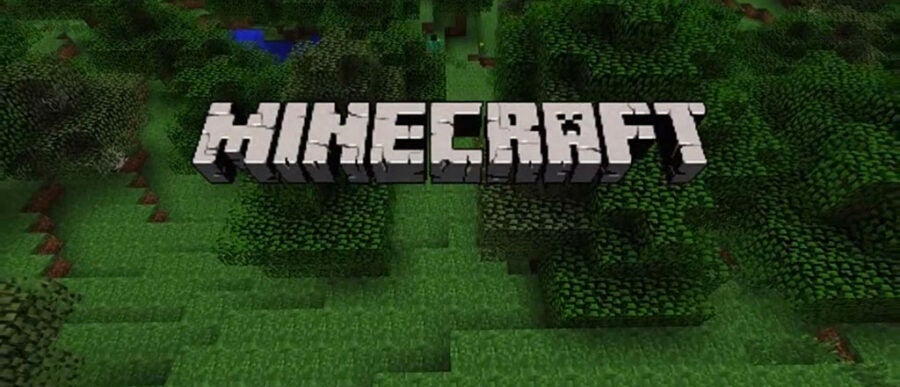What’s behind Microsoft’s $2.5 billion acquisition of Mojang, the video game developer that created Minecraft, an open-ended building environment? When the purchase was announced on September 15, Microsoft CEO Satya Nadella said the deal would bolster the company’s mobile efforts, as well as fortify its standing in video games. “Gaming is a top activity spanning devices, from PCs and consoles to tablets and mobile, with billions of hours spent each year,”Nadella said in a statement. Pointing to the more than 100 million downloads of the game on the PC since its launch in 2009, and the two billion hours played on Microsoft’s Xbox 360 game system alone, Nadella argued that Minecraftis “rich with new opportunities,” noting that it is “more than a great game franchise —it is an open world platform.”
In an interview on the Knowledge at Wharton show on Wharton Business Radio on SiriusXM channel 111, Wharton legal studies and business ethics professor Kevin Werbach said that Minecraft’s origins set it apart from other popular games. “Minecraft is different. It didn’t come from gaming companies like Electronic Arts, King or Zynga,”Werbach noted. “Minecraft came from a tiny company and one developer who built a company with a few of his friends. One reason a big company didn’t build Minecraft is because they didn’t think something so simple would be so enduring. Minecraft isn’t linear. It’s easy to understand, but sophisticated.”(Listen to the full interview using the player at the top of this page.)
In many ways, Microsoft’s primary challenge is not to mishandle Minecraft. After news of the sale of Mojang became public, many of the game’s diehard fans took to the Internet to bemoan the news, worried that the tech giant would do just that. The success of the Microsoft acquisition of Mojang will hinge on the long-term prospects for the platform: Is Minecraft near the end of its growth trajectory? Or can it become an enduring franchise akin to Lego, and cultivate the learning, engineering and programming skills of children and adults for years to come?
“If you look at the product life cycle and where Minecraft fits, it’s unclear whether the kids will move onto something else,” says Wharton emeritus management professor Lawrence Hrebiniak. “Minecraft can be enduring, but my gut feeling is that it’s a video game at the mid-point to end of its lifecycle.”
“If you look at the product life cycle and where Minecraft fits, it’s unclear whether [its users] will move onto something else.” –Lawrence Hrebiniak
As Microsoft announced the acquisition, Mojang detailed how co-founders Markus “Notch” Persson, Carl Manneh and Jakob Porsér would depart once the deal was complete. Microsoft will have to install new management to replace CEO Manneh and hold onto Mojang’s remaining developers. Persson said selling Mojang was about his sanity more than the money: The business of Minecraft had grown far beyond just the game he created and had taken on a life of its own.
“I’ve become a symbol,”Persson wrote in a very personal blog post. “I don’t want to be a symbol, responsible for something huge that I don’t understand, that I don’t want to work on, that keeps coming back to me. I’m not an entrepreneur. I’m not a CEO. I’m a nerdy computer programmer who likes to have opinions on Twitter. If I ever accidentally make something that seems to gain traction, I’ll probably abandon it immediately.”
A Strategic Fit
Strategically, Microsoft’s acquisition of Mojang allows the software giant to beef up content for the Xbox and its game developer division. Minecraft is also popular on multiple mobile platforms, including Apple iOS and Android. Nadella’s strategy for the company is oriented around cloud computing, mobile platforms and productivity; Microsoft is increasingly interested in selling its software as a subscription, even if it’s not going to be used on the company’s Windows operating system.
Minecraft, the top game on Xbox and the leading paid app on iOS and Android in the U.S., could join Microsoft Office as a cross platform juggernaut. In addition, the acquisition of Mojang ensures that Minecraft will have a version for Microsoft’s Windows Phone mobile operating system.
In addition, buying Minecraft gives Microsoft the chance to become relevant to a younger generation that has thus far paid little attention to the company’s products beyond the Xbox. “For Microsoft, the demographics of Minecraft users would have been a big factor,”Wharton operations and information management professor Kartik Hosanagar says. “Minecraft is used heavily by kids under 15. For Microsoft, this is a great way to remain relevant to that demographic and even introduce many of them to Xbox.”
“When those Minecraft customers are older, they can move to Halo, to the Surface [tablet], to Microsoft Word.” –Kevin Werbach
Werbach noted that Minecraft’s demographic sweet spot is children ages eight to 15. “Five years from now, that sweet spot will include totally different people,”he pointed out during his interview on SiriusXM. “There is no reason to think there won’t be [future] interest in Minecraft, and when those Minecraft customers are older, they can move to Halo, to the Surface [tablet], to Microsoft Word.”
But Hrebiniak is skeptical about the cross-selling potential from the Minecraft customer base. “If the preteen customer base is what Microsoft is buying into, it’s unclear whether they’ll grow up and pursue other products.”
Cultural Hurdles
The cultural issues clouding the deal were highlighted as soon it was announced. Mojang issued a statement stating the founders would leave the company, but noted “there are only a handful of potential buyers with the resources to grow Minecraft on a scale that it deserves.” Mojang leadership also said that it has worked closely with Microsoft since 2012 and has been impressed with “continued dedication to our game and its development.”
But can Microsoft enhance the game without being accused of ruining what makes it unique? “Microsoft has shown in the past that it gets involved when it acquires a company. It’s in Microsoft’s DNA to meddle,” says Hrebiniak.
Werbach added that Microsoft will inevitably change Minecraft, but has to tread lightly. “The story of Mojang is tied to the notion of thumbing noses and staying true to a vision. It’s difficult for big companies to act that way.”For instance, if Microsoft made Minecraft exclusive to the Xbox “it would destroy goodwill” with the game’s players. “Microsoft will keep Minecraft on other platforms,”he predicted. “Remember, Microsoft is trying to be cool here and wants to be on the lips of kids who will [soon] be in college and then the workforce.”
Forrester analyst James McQuivey said in a note that Microsoft will struggle with letting “Minecrafters be Minecrafters.”He noted that “Minecraft is what it is because its users are free to make it whatever they want it to be. Will Microsoft be able to let the people run free with Minecraft the way the founders did and continue to do? The right answer, to preserve the value of the property, is yes,” explained McQuivey. “But that is not usually the corporate answer, whether at Microsoft or elsewhere.”
“The first step for Microsoft is to figure out how not to kill [Minecraft].” –Kevin Werbach
The struggle for Microsoft’s Minecraft integration partially revolves around how the company is organized, according to Hosanagar. Because Microsoft has so many hardware and software units, the Minecraft deal highlights how being cross platform can cause internal strife, says Hosanagar, adding that Microsoft has an interest in selling its Nokia phones with Windows Phone mobile operating systems, but Office benefits from being on Android and iOS. Thus, one product does well at the expense of another.
“Similarly, Minecraft is available on devices that compete with Microsoft: On Sony’s Playstation that competes with Xbox, as well as Android and iOS, both of which compete with Windows Phone,”he notes. “So that inherently puts two divisions at odds with one another.”
The Future of Minecraft
Though the Minecraft purchase has its risks, the $2.5 billion price tag was reasonable relative to other purchases. Microsoft paid $9.5 billion for Nokia. Mojang’s revenue was roughly $290 million annually with Minecraft generating more than $100 million in profit, according to press reports. Microsoft said the purchase would be neutral to its fiscal 2015 earnings.
“Minecraft has had a good run, but it’s scary that it has been up there for a long time,” says Hrebiniak. “Will something else come along?”Werbach notes that there are a number of Minecraft knock-offs, and Microsoft will have to defend the franchise, as well as add new features to the game.
However, Werbach views Minecraft as more than just a game—it’s just as much a community and a social network. He noted that schools are using the platform to teach concepts ranging from architecture to computing. Minecraft players have created numerous how-to videos that gain large followings online.
If all goes well, Minecraft DNA could fit into every unit of Microsoft, Werbach noted. In a decade, it’s conceivable that Minecraft will be used in corporations for training and education. After all, Second Life, an online virtual world that faded in popularity after a brief surge of enthusiasm, was initially seen as a corporate collaboration tool. “Minecraft can potentially be a new kind of virtual environment platform,” Werbach said. “The first step for Microsoft is to figure out how not to kill it, and then figure out how to grow, develop and advance it.”



